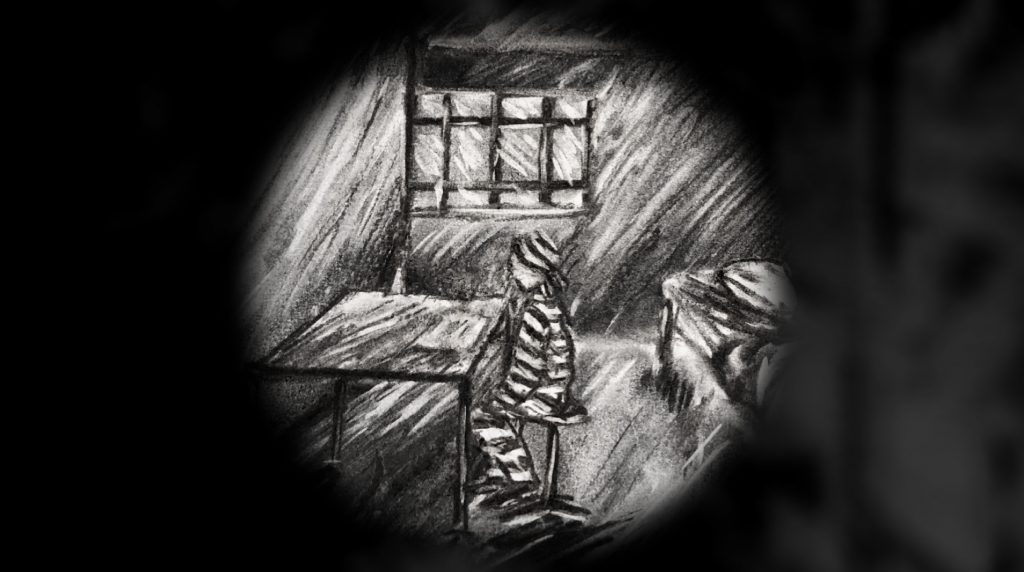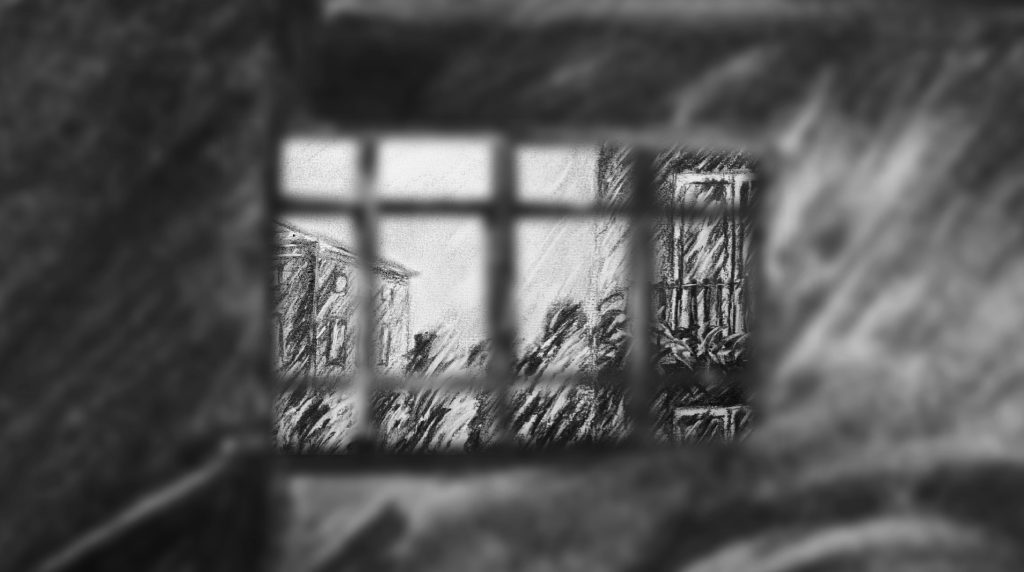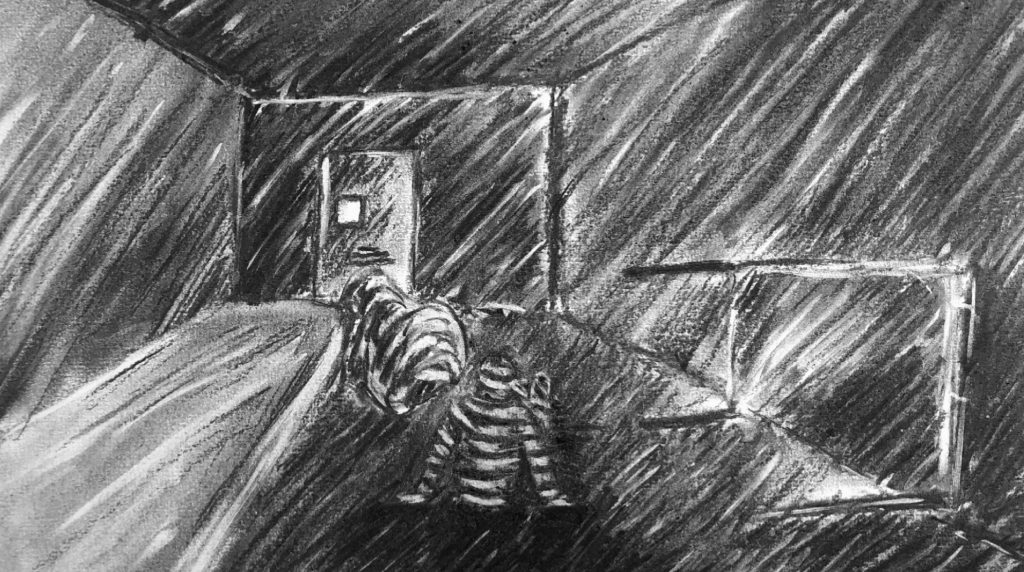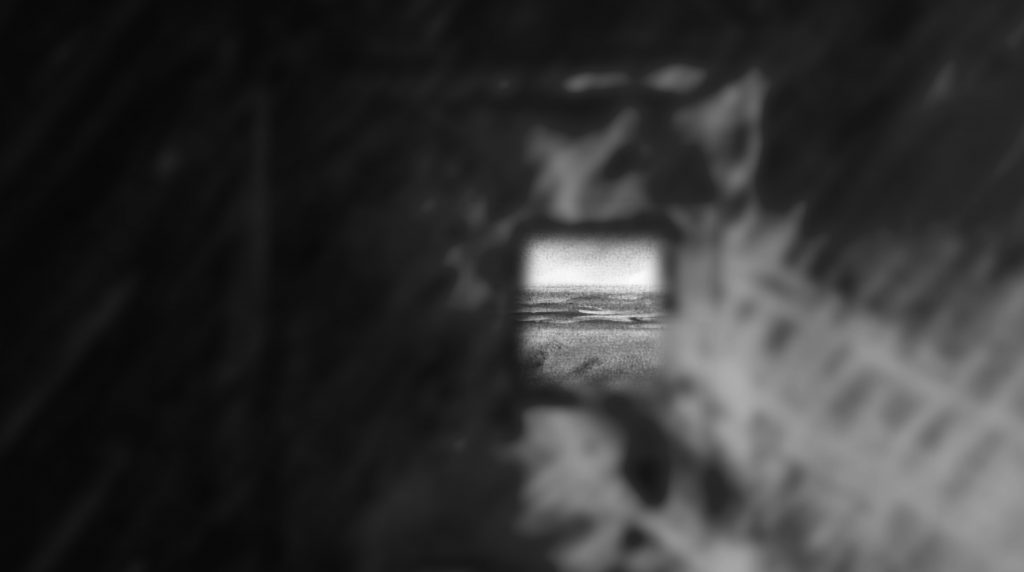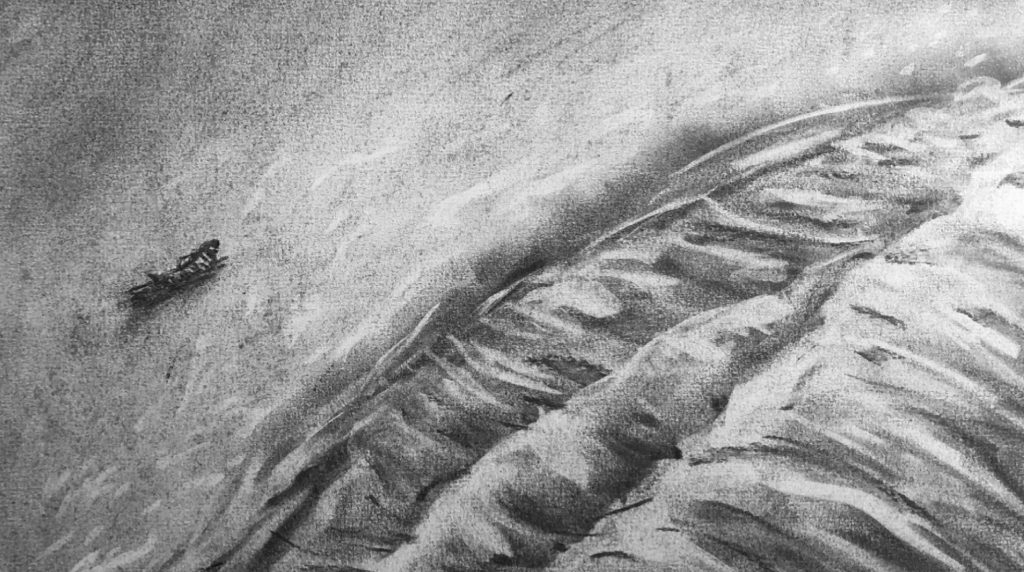Condenado ao Imaginário
Rodrigo Guimarães
Vídeo, Animação 1920 x 1080, carvão vegetal s/papel
04’17”
[PT]
A obrigação de estarmos confinados no mesmo espaço durante vários dias que a pandemia impôs estimulou em nós reações e comportamentos que, até então, dificilmente nos aproximámos de os experienciar.
Somente em condições extremas nos veríamos ausentes de certos privilégios que esta crise pandémica se encarregou de os elevar a tal estatuto. As consequências que este surto promoveu determinaram a renúncia de algo que vai muito para além do comum. Trata-se de um dos principais direitos do ser humano: a liberdade.
Assim, a animação desenvolvida totalmente a partir do imaginário, aborda essencialmente as sensações de desespero, o desejo de fuga e libertação, sendo capaz de representar, numa visão hiperbólica, aquilo que senti durante este período.
À experiência de viver fechado com a impossibilidade de sair à rua e sem antever o momento em que tudo regressaria ao normal é associada, metaforicamente, a figura de um prisioneiro. A personagem adota certos comportamentos que se enquadram num estilo de vida monótono, repetitivo e sem um fim à vista.
O limite de ações que o espaço e a condição em que o interveniente se encontra conduzem-no à perda de algum discernimento e, à semelhança daquilo que eu próprio também senti, ao despertar de determinados comportamentos e desejos impulsionados pelo imaginário, onde, neste domínio, não existem limites nem quaisquer tipos de condicionamentos.
Inicialmente, a ação está concentrada na cela do prisioneiro, um espaço pequeno e fechado do qual apenas se tem acesso ao mundo exterior através da janela. Num segundo momento, a narrativa é marcada pela presença de outros espaços e realidades, algo para onde apenas o imaginário nos é capaz de transportar. A mente é, assim, entendida como o veículo de transporte para outros horizontes que contrastam com o espaço asfixiante em que o personagem se encontra.
O trabalho confronta os domínios do consciente/inconsciente e realidade/sonho. Tudo o que transcende o espaço da cela na qual o prisioneiro se encontra confinado é fruto de uma viagem do inconsciente, algo proveniente do imaginário que se procura fundir na dura realidade que a personagem vive. Um domínio que não vê condicionamentos ou impedimentos, onde realmente podemos ser livres sem o ser totalmente.
[EN]
The obligation to be confined in the same space for several days that the pandemic imposed stimulated reactions and behaviors that, until then, we have hardly been able to experience them.
Only in extreme conditions would we be absent from certain privileges that this pandemic crisis took on the task of elevating them to such a status. The consequences that this outbreak has led to the resignation of something that goes far beyond the ordinary. It is one of the main human rights: freedom.
Thus, an animation developed entirely from the imaginary, touch the feelings of despair, the desire to escape and liberation, being able to show, in a hyperbolic view, what I felt during this period.
The experience of living closed with the impossibility of going out into the street and without anticipating the moment when everything would return to normal is metaphorically associated with the figure of a prisoner. The character adopts certain behaviors that fit a monotonous and repetitive lifestyle with no end in sight.
The limit of actions that the space and the condition in which the intervener lives leads to the loss of some discernment and, similarly to what I also felt, to the appearance of certain behaviors and desires driven by the imaginary, where, in this domain, there are no limits or any types of conditioning.
Initially, the action is concentrated in the prisoner’s cell, a small and closed space where only the outside world can be accessed through the window. In a second moment, the narrative is marked by the presence of other spaces and realities, where only the imaginary is capable of transporting us. Thus the mind is understood as the vehicle for transport to other horizons that contrast with the suffocating space that the character is in.
The work confronts the domains of the conscious / unconscious and reality / dream. Everything that transcends the cell space where the prisoner is confined is the result of a journey from the unconscious, something from the imaginary that seeks to merge into the hard reality that the character lives. A domain that sees no conditioning or impediments, where we can really be free without being it totally.

